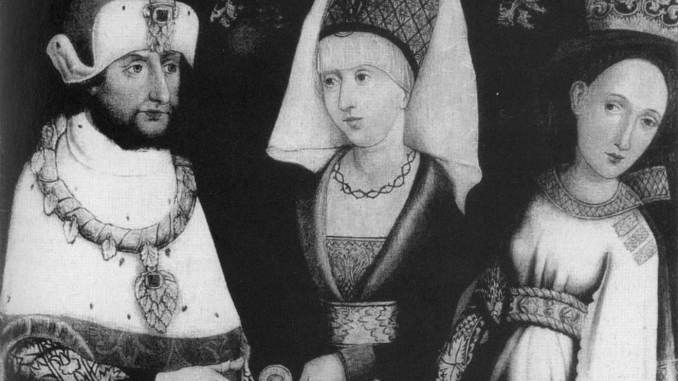
Maria of Brabant was born circa 1226 as the daughter of Henry II, Duke of Brabant en Maria of Hohenstaufen. She was one of six children, and she had a further two half-siblings from her father’s second marriage to Sophie of Thuringia. Little is known of her youth, but she was possibly betrothed to the future Edward I of England in 1247. Negotiations led to nothing, and she would be married to Louis II of Bavaria on 2 August 1254. They were only married for two years when she was accused of adultery.
Accounts vary on what exactly happened. Maria probably wrote two letters while her husband was away from home. One of these letters was intended for a knight. The content of the letter is unknown but apparently, Louis was given the letter intended for the knight, and he came to the conclusion that Maria was having an affair.

Some sources claim that Louis spun into a murderous frenzy, but most likely Maria was executed at Castle Mangoldstein at Donauwörth on 18 January 1256 by ducal decree. Two of her ladies also died. She is buried in the Church of the Cross in Donauwörth.

Proof of her adultery was never validated. Pope Alexander IV later ordered Louis to found a monastery as penance for the killing. To comply with this, he founded Fürstenfeld Abbey. Louis married twice more after Maria’s death and eventually fathered a surviving heir with his third wife. It’s frustrating that we know so little of the circumstances of her death. They were married for two years without any children. Was he perhaps already sick of waiting for an heir?
Political motives could also have set her up for execution. Maria was a first cousin of William II of Holland, the anti-King of Germany. The truth is we’ll probably never know the reason behind this sudden and brutal execution. Whatever the reason, it cost this young woman her life, before we got to find out her true potential.

Sounds like Henry Viii, killing Anne Boleyn after just three years of marriage, with no proof of adultery or Katherine Howard after 18 months, again for writing a letter. These rulers were mad.
In “Anomalies and Curiosities of Medicine,” the author wrote the following:
“Louis of Bavaria, who died in 1294,on learning of the innocence of his wife, whom he had put to death on a suspicion of her infidelity, had a change of color in his hair, which became white almost immediately.”
Not sure how true it is, but you might check it out. I found your site trying to research if its true!